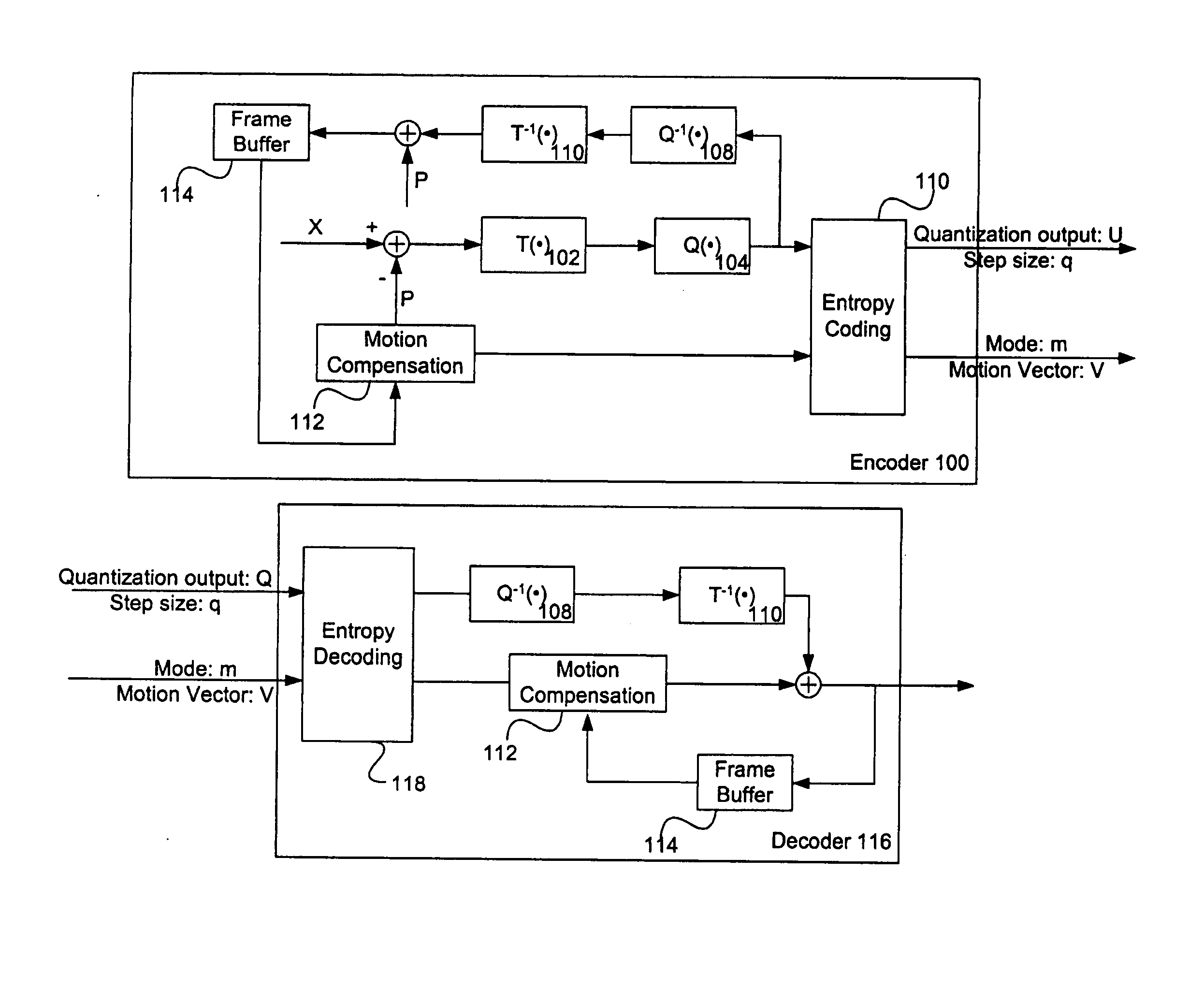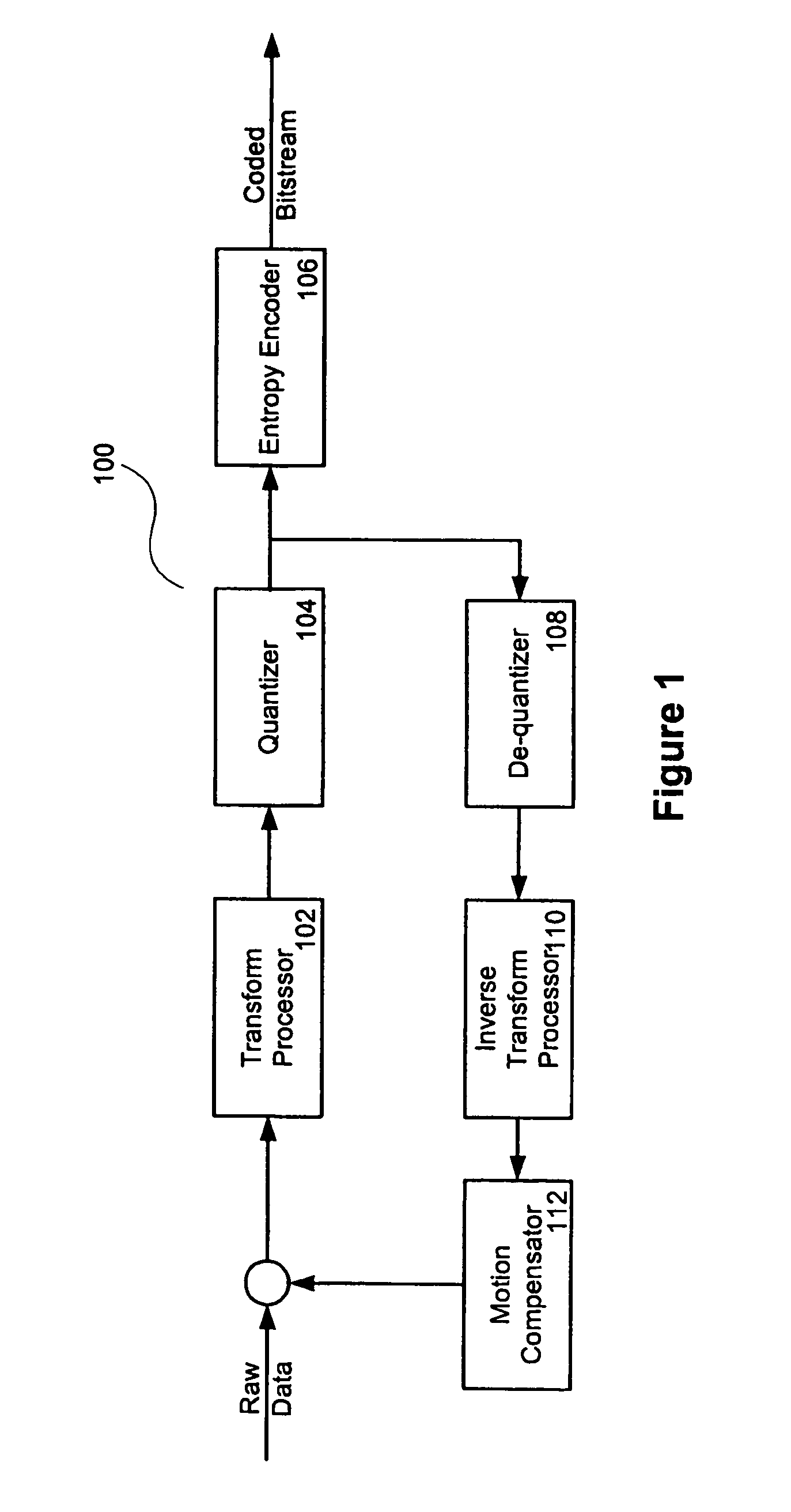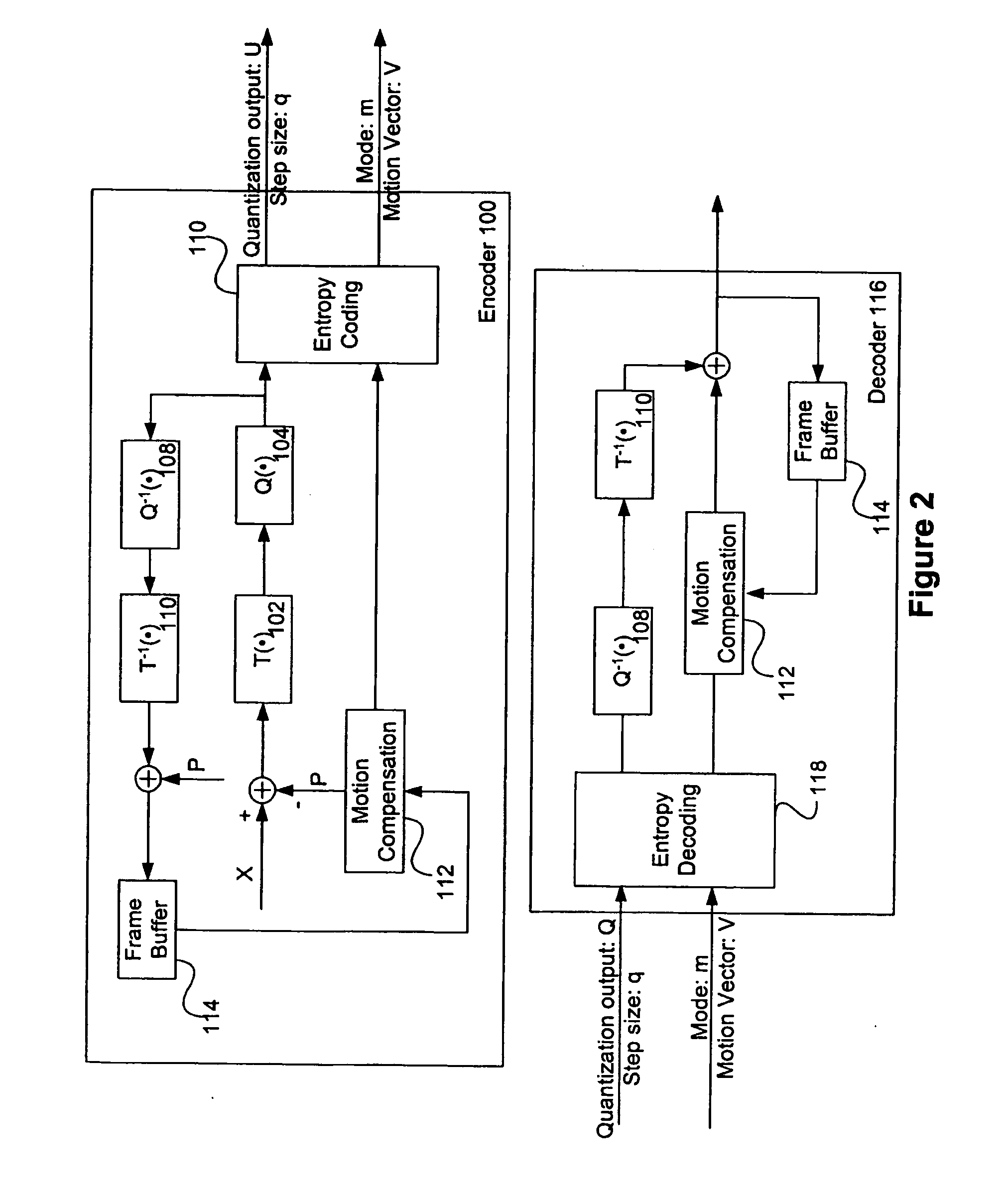Soft decision and iterative video coding for MPEG and H.264
a technology of mpeg and h.264, applied in the field of video encoding, can solve the problems of full recovery of original files, distortion that can be measured as a rate distortion, and insufficient video data
- Summary
- Abstract
- Description
- Claims
- Application Information
AI Technical Summary
Benefits of technology
Problems solved by technology
Method used
Image
Examples
Embodiment Construction
[0042] Generally, the present invention provides a method and system for video coding. The use of soft decision processing allows for iterative coding to optimize multivariable solutions across a number of elements in a hybrid video encoder.
[0043]FIG. 2 illustrates the signal flow of a typical hybrid codec in H.264. As with FIG. 1, an encoder 100 receives a data stream X. The frames in the data stream are motion compensated by prediction factor P, and the result is provided to transform processor 102. The transformed residual is provided to quantizer 104, whose output is provided to entropy encoder 110. The output of quantizer 104 is also provided to inverse quantizer 108, and then to inverse transform 110. The reconstructed residual, along with the motion compensation factor is provided to frame buffer 114, which is used as a resource by motion compensator 112 in determining the motion prediction value P. The motion compensator 112 also provides prediction information, including a...
PUM
 Login to View More
Login to View More Abstract
Description
Claims
Application Information
 Login to View More
Login to View More - R&D
- Intellectual Property
- Life Sciences
- Materials
- Tech Scout
- Unparalleled Data Quality
- Higher Quality Content
- 60% Fewer Hallucinations
Browse by: Latest US Patents, China's latest patents, Technical Efficacy Thesaurus, Application Domain, Technology Topic, Popular Technical Reports.
© 2025 PatSnap. All rights reserved.Legal|Privacy policy|Modern Slavery Act Transparency Statement|Sitemap|About US| Contact US: help@patsnap.com



